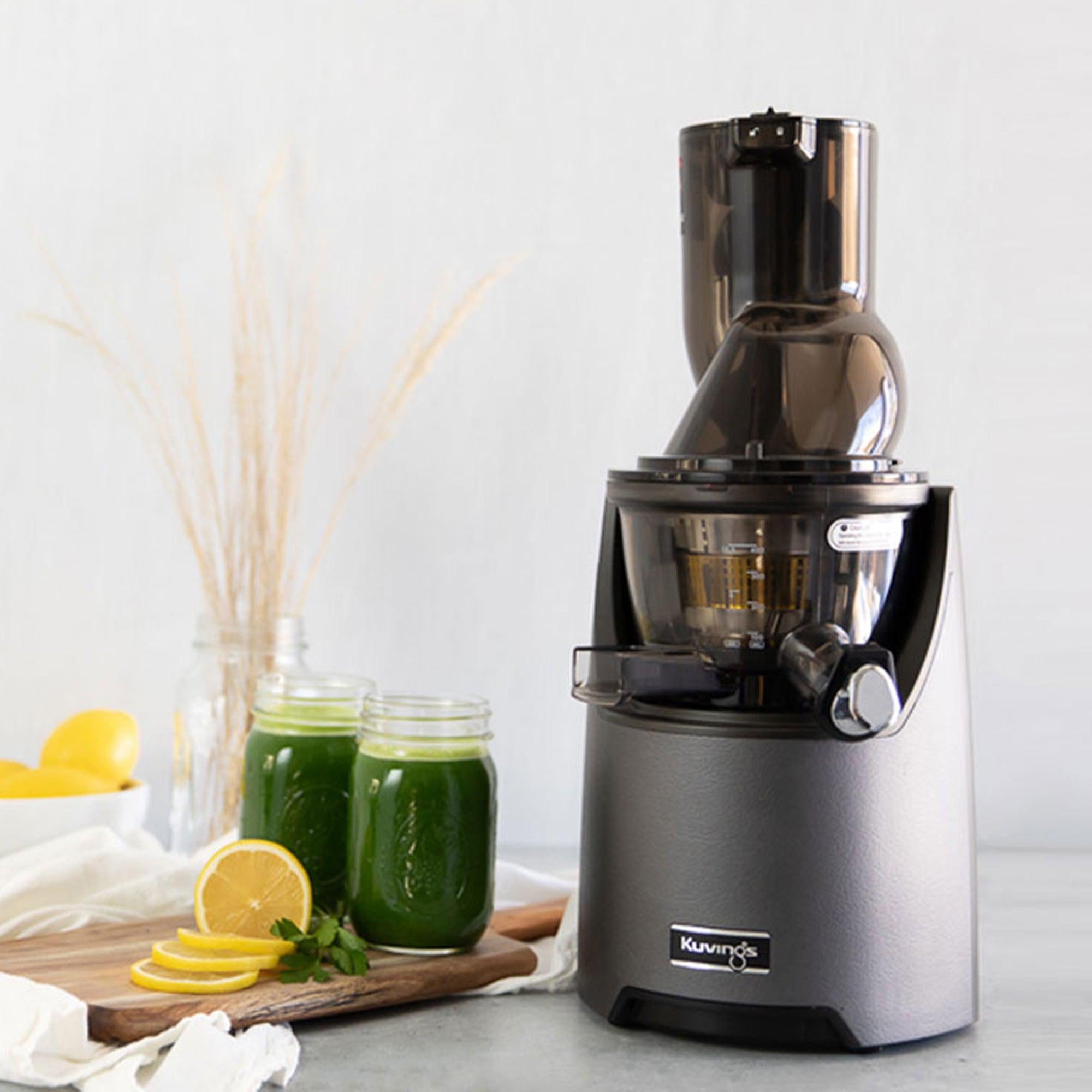Leafy greens are nutrient-dense and benefit the body in many ways! Despite this, most people don't eat greens because they dislike their bitter taste.
Juicing leafy greens is a great alternative to eating greens, especially when you juice them with other ingredients.
Using a Kuvings Slow Juicer and considering the following factors simplifies juicing leafy greens!
- Type of greens
- Prep
- Use of other ingredients
Tender Greens
Tender greens have thin, delicate leaves and stems. The greens that fall under this category are:
- Spinach
- Arugula
- Parsley
- Cilantro
- Dandelion greens
- Watercress
Chop tender greens to prevent them from tangling in the juicer.
We especially recommend using baby spinach over regular spinach. Chopping baby spinach is unnecessary because they're small and tender. You also don't lose any nutrients because baby spinach and regular spinach have the same nutritional content!
Firm Greens
Firm greens have tough leaves and stems. Firm greens are ideal for juicing because they maintain their structure even when chopped and tossed. The greens that fall under this category are:
- Kale
- Collard greens
- Mustard greens
- Chard
- Cabbage
- Lettuce
Roughly chop your firm greens to fit the juicer and allow quicker processing.
Wheatgrass
Wheatgrass and other microgreens are small and thin. They can tangle and miss getting juiced.
We found that chopping wheatgrass 1 inch or smaller is the most efficient.
Why do I get little juice from leafy greens?
Leafy greens lack water content. For reference, a Kuvings Whole Slow juicer yields one cup of juice from one and a half bundles of spinach.
While this yield may seem low, it's still higher than you'd get with a high-speed juicer. Slow juicers' slow operation allows them to extract juice more thoroughly. This is especially crucial for delicate ingredients like leafy greens.
Why does my juice have foam?
Foam is 100% normal. You'll notice that you get a lot more foam when juicing leafy greens, apples, and pineapples because these ingredients are high in fiber. The fiber traps oxygen and creates foam.
High-speed juicers produce more foam because their fast-spinning blades introduce more oxygen. Slow juicers spin slowly, introducing less oxygen to the juicing process.
You can stir the foam into the juice, strain it, or skim it off the top and toss it.
The best way to juice leafy greens
Most people don't juice solely leafy greens because they're difficult to juice. They also don't drink straight leafy green juice because it's low-yield, foamy, and bitter.
The most common way to juice leafy greens is with large and firm ingredients!
Firm ingredients help push the soft leaves through the juicer, preventing clogging and reducing the need for chopping.
Larger and firmer ingredients also tend to have higher water content. Combining water-rich ingredients with leafy greens will increase juice yield and likely produce a better-tasting juice. You'll also notice that there is significantly less foam production.
Overall, you get better results and a smoother juicing experience when juicing leafy greens with other ingredients!
For more tips and recipe inspiration, follow @kuvingsusa on Facebook and Instagram.
Still need help? Contact customer support at support@kuvingsusa.com.

















